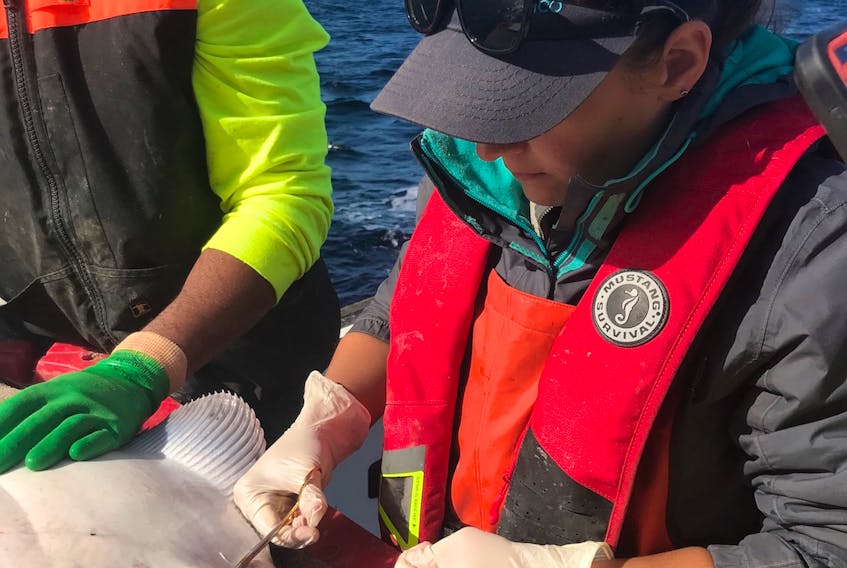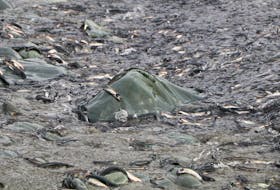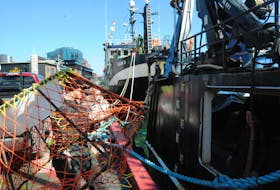It’s a slimy brute of a fish with a crooked set of jagged teeth only an orthodontist could love.
Despite its complete lack of beauty, the pure white flesh of the Atlantic halibut is a prized item on restaurant menus.
A 6-oz halibut steak at Halibut House in Ottawa (halibuthouse.ca) can run you anywhere from $17 to $22, depending on the side order you choose.
In fact, Atlantic halibut continues to be the most valuable groundfish stock in Atlantic Canada.
In 2019 fishers earned from $5.20 to more than $9 per pound for their catches.
Exports of fresh halibut are expected to exceed $90 million this year, according to a recent press release from the Atlantic Halibut Council (AHC).
The total allowable catch for the Maritimes region (Scotian Shelf to the Grand Banks) was 5,000 metric tonnes this year.
That’s significant, considering that in 1995 the allowable catch was just 850 metric tonnes and the Department of Fisheries and Oceans was contemplating a complete shutdown over concerns about the health of the stock.

Quick facts about Atlantic Halibut
(Latin name: Hippoglossus hippoglossus)
- The largest, most widely-ranging and commercially-valuable groundfish in the Atlantic Ocean.
- Have a compressed, oval body and live on or near the bottom of the ocean.
- Their two eyes are on the right side of their bodies; and none on the left – making them totally blind on the left side.
- They can live up to 50 years
- They can grow to more than 2.5 meters in length and weigh up to 300 kg, or more.
- Their range is the northern Atlantic, from the coast of Virginia to as far north as the Artic Circle.
- They are abundant off the coasts of Greenland, Newfoundland and Labrador, the Gulf of St. Lawrence and Nova Scotia.
- They are commercially extinct in US waters and are rarely found south of the Grand Banks.
Source: Department of Fisheries and Oceans
Getting from there to now took a lot of patience, and collaboration between fishers and scientists, says Shelburne, N.S., fisher Gary Dedrick, who is a member of the under-45 fleet.
Progress didn’t happen overnight, Dedrick told SaltWire.
First the fishers had to convince DFO that the Atlantic halibut stock was not in as bad shape as the department’s trawl surveys indicated.
The problem with the DFO’s annual trawl surveys, said Dedrick, is only small halibut could be caught, and the areas being surveyed were not areas where halibut were typically found.
That lack of detail was skewing the scientific assessments, he said.
Fishers knew the only way to catch larger halibut was by using hook and line.
So, in 1998, they decided to do their own work, to prove to the department that there were big halibut in the deeps.

Dedrick said 22 small longliners from Nova Scotia, on their own dime, went fishing for data, catching and recording information on the bigger fish.
According to Dedrick, they collected so much data over the next few years that DFO couldn’t process it all.
With the formation of the Atlantic Halibut Council in 2004, and some government funding, university students were hired to plug the fishers’ survey data into the DFO system.
And the big picture on Atlantic halibut began to get a little clearer.
Dedrick said DFO began to realize the Atlantic halibut stock was in better shape than thought and, as a result, the total allowable catch increased over time.

The gadgets helping science
In addition to the longline survey by AHC members — 14 boats are still involved — the search for information about halibut now involves some cool fish-tracking gadgets.
Last year the AHC and the DFO began a multi-year collaborative research program, with seven different projects, to learn more about the stock.
The research is budgeted at $4.27 million with financial support from AHC members and money from the Atlantic Fishers Fund.
Data collection now involves high-tech tools, including satellites.
Earlier this year, 30 large halibut were fixed with satellite tags during the annual longline survey. By the spring of 2021, 20 more halibut will be tagged.
These tags are programmed to detach from the halibut and “pop up” to the surface, explained Cornelia (Nell) den Heyer, who has been the DFO’s lead scientist on Atlantic halibut since 2014. The tags don’t need to be retrieved to collect the data because the information is relayed via satellite.

She says the data collected should help scientists learn about spawning locations and seasons by seeing how adult halibut move around the Scotian Shelf, Laurentian Channel and southern Grand Banks throughout the year.
Scientists are also using an array of underwater acoustic receivers, placed just north of “the Gully” Marine Protected area off Nova Scotia; an area known as a hot spot for juvenile halibut.
The receivers will monitor the movement of young and old halibut, which have been fixed with acoustic transmitting tags, in and out of the area through the year.
This particular project involves not only DFO scientists, but technicians from Dalhousie University’s Ocean Tracking Network (OTN) and researchers from Acadia University.
By next spring 150 halibut will be surgically implanted with acoustic tags. Each one of these small devices will transmit unique “pings,” which can be detected by the acoustic receivers.
The acoustic tags will transmit for up to three years, helping scientists build a long-term picture of halibut movement.
OTN will deploy underwater robotic gliders to upload the data collected as the halibut swam past.
Den Heyer said planning for the acoustic research program for halibut began a couple years ago and they had aimed to tag fish this year.
However, the pandemic, and COVID protocols for the at-sea work, slowed progress.
The acoustic research program will now get underway in 2021.
Dedrick is excited about the research that’s ramping up, to add to the information the industry been collecting for over 20 years.
“Over the next five years you’ll see information on halibut explode,” he said.

Collaborative results
Both den Heyer and Dedrick say collaboration has been the crucial tool leading to improved knowledge of the Atlantic halibut stock.
Dedrick admits that he was skeptical at the start, wary of getting involved in something that depended on cooperation between fishers and sciences.
But 20 years later he’s proud of what they’ve accomplished.
“I think it’s a role model (for) other fisheries, including shellfish,” added Dedrick, “to look at fisheries where the data is not good or (DFO) don’t have it at all.
Self-restraint is also important, he said.
The Atlantic Halibut Council
Current membership includes a collective of industry organizations:
- Shelburne County Quota Group – representing fixed gear under-45 ft licence holders.
- Nova Scotia Fixed Gear 45-65 ft Association – representing fixed gear licence holders operating boats in the 45 to 65 ft class
- Members of the Atlantic Fixed-Gear Association- representing fixed gear licence holders in the 65-100 ft vessel class.
- Atlantic Groundfish Council – representing mobile gear licence holders (trawlers) operating vessels over 100 ft long.
- The Labrador Fishermen’s Union Shrimp company, a fisherman-owned cooperative headquartered in Mary’s Harbour, Labrador.
In the case of halibut, he said, it takes seven or eight years for a juvenile halibut to grow to market size.
He said that’s why the Atlantic Halibut Council decided, from the start, that they needed to establish a minimum size of 32 inches — equivalent to a 10-pound halibut — for allowable catch.
Anything smaller than that has to be released.
“I think that was one of the most significant things we did when we started,” he said.
Den Heyer also points to the collaboration between the fishers and DFO science, as well as the recent involvement of academia through OTN, to bring more attention
Above all, she applauds the industry for persistence and patience and for starting their longline survey in the first place.
“Since the mid-2000s we can see from the longline survey that the stock has been increasing. Those guys were committed to that survey, and that’s really worked out. And if industry hadn’t stuck with that, we wouldn’t have had that information, and that’s a valuable thing.”
For more about the history of science research on Atlantic Halibut, click here.









